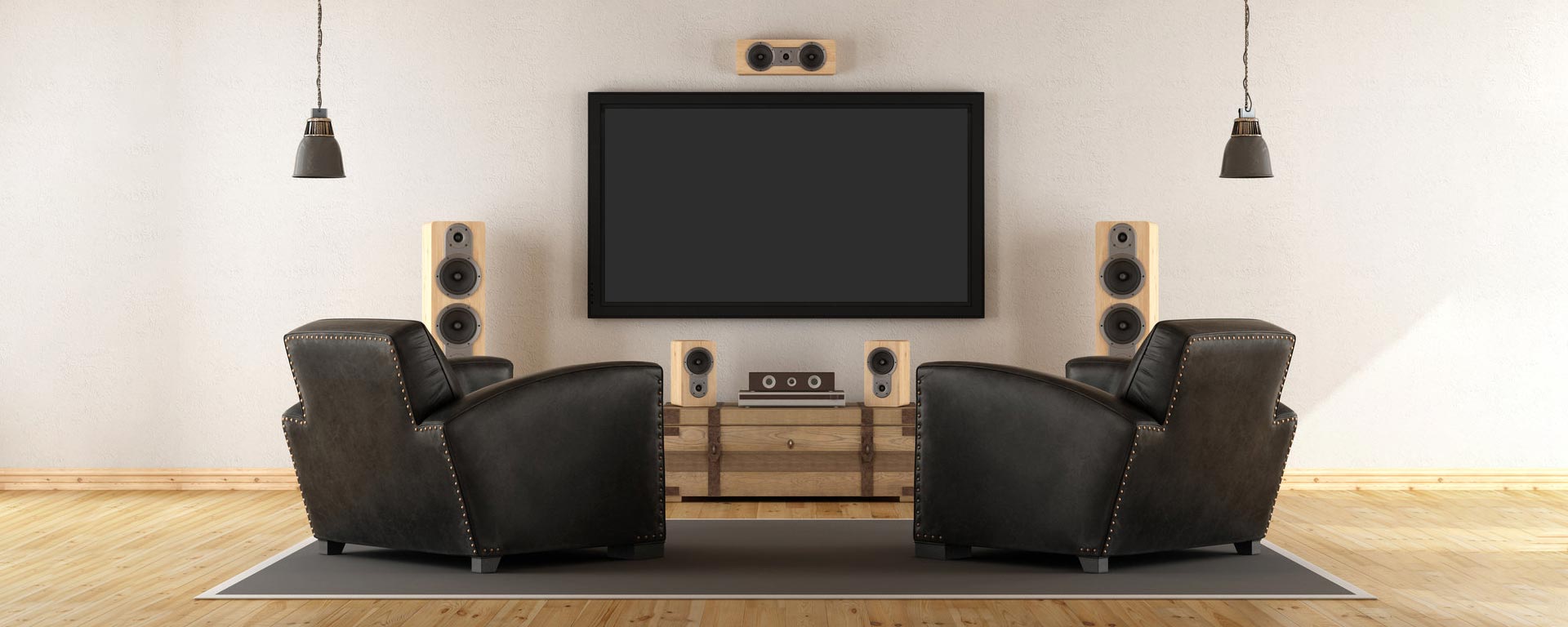Browse through Pinterest, Getty Images or any other stock photo website for ‘home theatre’ and you’ll be dazed with photos of huge cinematic theatres with rows of thick leather seats and gigantic screens. Who wouldn’t wish to have a home theatre like one of those, but let’s face it, most of us cannot afford such setups. Us mortals usually place home theatre systems in our living rooms, or perhaps a spare bedroom that dubs as an entertainment room. Building such a dual-purpose home theatre is tricky, so people often make these common mistakes.
Placing a screen too high
It’s not in our nature to look up. Even a small tilt upwards over the course of several hours can cause pain in the neck and shoulders area. Ergonomic experts recommend that the screen should be positioned so that your gaze hits somewhere between its top quarter and top edge.
Too close or too far away
Sitting too close to the screen reduces the quality of the image, while sitting too far makes it hard to see fine details. For someone with 20/20 vision looking at a 50” screen, the ideal distance would be 10 feet. There are online distance calculators that can help you determine the right place to install your screen. Still, depending on the size of the room and the screen, achieving an optimal viewing distance may become a challenge. Also, keep in mind that buying a smaller TV is easier than making the room bigger.
Staring at the sun
Keep in mind that ambient lighting negatively affects the image quality, so you’ll need to find an optimal spot to place your TV. Also, never let the sunlight shine directly on the screen, and never place your TV in front of a large window. Blackout shades or blinds are crucial for full movie experience if the room is too bright.
Busy foot traffic
Nobody is a fan of huge shadows of people getting up in old time cinemas. The truth is that no one wants people strolling in front of their TVs. Yet, in many cases, the TV set is placed on the main trail between the kitchen and the front door. Try to break up the arrangement by moving your seat forward so that people can pass behind you.
Insisting on full surround
While for many movie enthusiasts a full surround sound system is a must in a home theatre, this standpoint has its downsides. Satellite speakers in the back should either be wireless, which is expensive, or you need to find a way to wire them under the carpet or against the walls. Also, rear satellites need to be further from the viewer than the front stereos. In other words, go for it only if you have enough space.
Speakers in furniture
Many people don’t like the idea of speakers just sitting there in the theatre room. Instead, they try to hide them with cabinets. Subwoofers placed in cabinets have muffled output, while speakers won’t be able to project the sound it in the desired direction.
Quality is in the eye of the beholder
Walking through a retail store in search of the right TV can turn into a real nightmare. Televisions look so different and yet so alike, the speakers might sound the same in the store but different when you bring them home. The lighting in the store is different than what you would normally have in your theatre room.
Read the trusted reviews and don’t hesitate to seek professional advice. For instance, technicians at Universal Home Theatre take into account everything from the ideal room dimensions, wall construction, optimal size and types of video display, lighting controls, acoustics, furnishings, and whether or not to integrate free-standing or concealed components. In this way, you are bound to get the best audio-visual solutions that will fit in your space and setting perfectly.
As you can see, building a serious home theatre system is not an easy task. Following these seven tips will help you achieve a much better viewing experience, even if you don’t have that much room.

